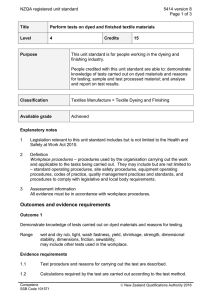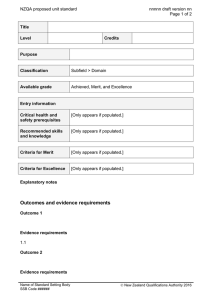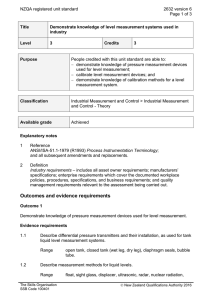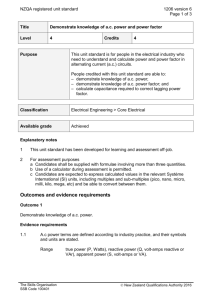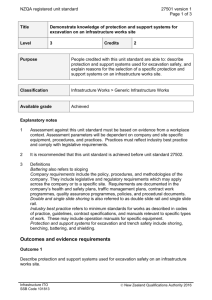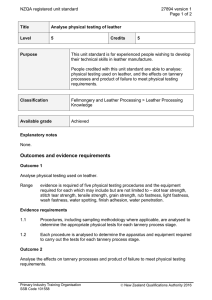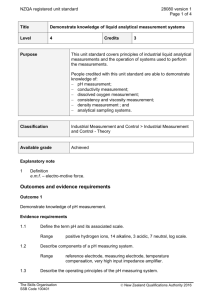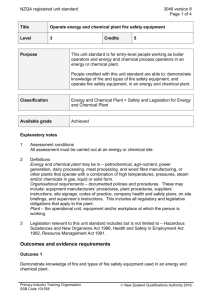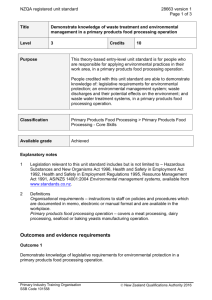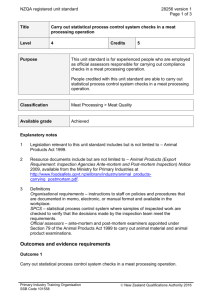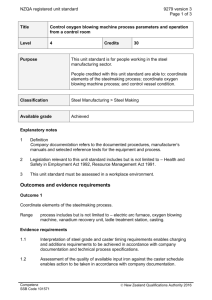27901 Evaluate woolskin post tannage processes
advertisement
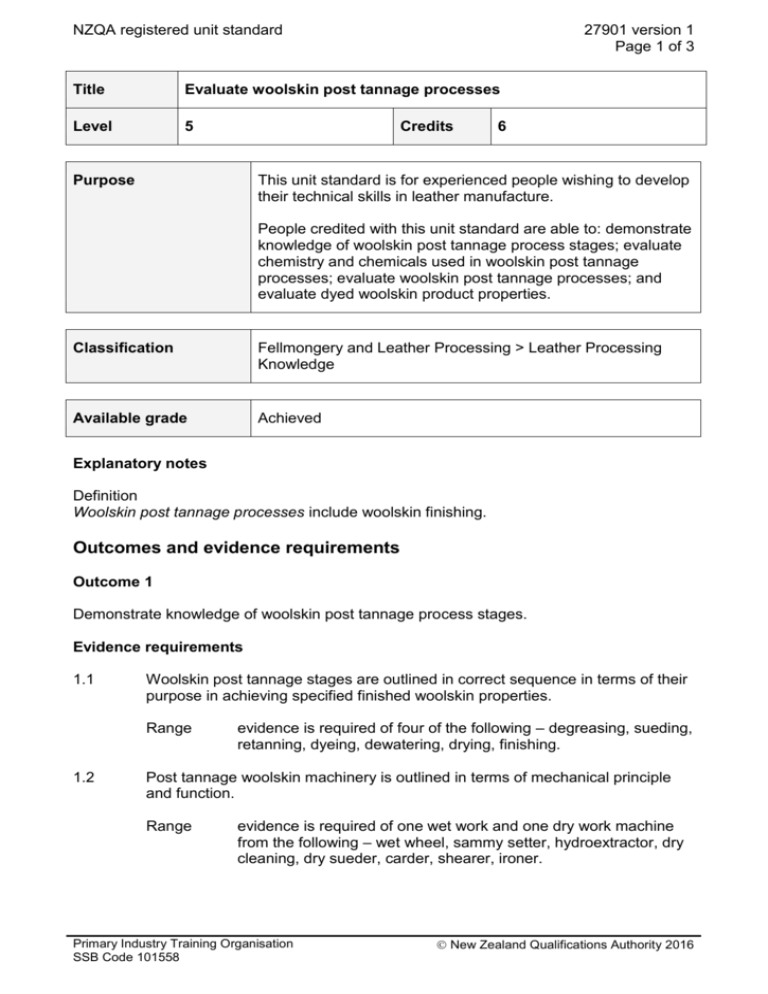
NZQA registered unit standard 27901 version 1 Page 1 of 3 Title Evaluate woolskin post tannage processes Level 5 Credits Purpose 6 This unit standard is for experienced people wishing to develop their technical skills in leather manufacture. People credited with this unit standard are able to: demonstrate knowledge of woolskin post tannage process stages; evaluate chemistry and chemicals used in woolskin post tannage processes; evaluate woolskin post tannage processes; and evaluate dyed woolskin product properties. Classification Fellmongery and Leather Processing > Leather Processing Knowledge Available grade Achieved Explanatory notes Definition Woolskin post tannage processes include woolskin finishing. Outcomes and evidence requirements Outcome 1 Demonstrate knowledge of woolskin post tannage process stages. Evidence requirements 1.1 Woolskin post tannage stages are outlined in correct sequence in terms of their purpose in achieving specified finished woolskin properties. Range 1.2 evidence is required of four of the following – degreasing, sueding, retanning, dyeing, dewatering, drying, finishing. Post tannage woolskin machinery is outlined in terms of mechanical principle and function. Range evidence is required of one wet work and one dry work machine from the following – wet wheel, sammy setter, hydroextractor, dry cleaning, dry sueder, carder, shearer, ironer. Primary Industry Training Organisation SSB Code 101558 New Zealand Qualifications Authority 2016 NZQA registered unit standard 27901 version 1 Page 2 of 3 Outcome 2 Evaluate chemistry and chemicals used in woolskin post tannage processes. Evidence requirements 2.1 Chemistry of post tannage stages is evaluated in terms of mechanism and chemicals used. Range 2.2 evidence is required of one of the following – retanning, dyeing, ironing. Factors that influence degreasing efficiency or woolskin dye levelness are evaluated in terms of woolskin post tannage processes. Outcome 3 Evaluate woolskin post tannage processes. Evidence requirements 3.1 Woolskin post tannage processes are evaluated in relation to their use in the production of different woolskin products. Range 3.2 evidence is required of one of the following – rugskins, double face, shearling. Woolskin dyeing is evaluated in terms of the tannery process method and chemicals used. Range evidence is required of one of the following – wool reserve, tone on tone, wool only. Outcome 4 Evaluate dyed woolskin product properties. Evidence requirements 4.1 Dyed woolskin product properties are evaluated in terms of product use and assessment methods. Range evidence is required of three of the following – light fastness, rub fastness, launderability, perspiration fastness, dry cleanability, water spotting, tear strength. Replacement information Primary Industry Training Organisation SSB Code 101558 This unit standard replaced unit standard 8404. New Zealand Qualifications Authority 2016 NZQA registered unit standard Planned review date 27901 version 1 Page 3 of 3 31 December 2017 Status information and last date for assessment for superseded versions Process Version Date Last Date for Assessment Registration 1 21 February 2013 N/A Consent and Moderation Requirements (CMR) reference 0033 This CMR can be accessed at http://www.nzqa.govt.nz/framework/search/index.do. Please note Providers must be granted consent to assess against standards (accredited) by NZQA, before they can report credits from assessment against unit standards or deliver courses of study leading to that assessment. Industry Training Organisations must be granted consent to assess against standards by NZQA before they can register credits from assessment against unit standards. Providers and Industry Training Organisations, which have been granted consent and which are assessing against unit standards must engage with the moderation system that applies to those standards. Requirements for consent to assess and an outline of the moderation system that applies to this standard are outlined in the Consent and Moderation Requirements (CMR). The CMR also includes useful information about special requirements for organisations wishing to develop education and training programmes, such as minimum qualifications for tutors and assessors, and special resource requirements. Comments on this unit standard Please contact the Primary Industry Training Organisation standards@primaryito.ac.nz if you wish to suggest changes to the content of this unit standard. Primary Industry Training Organisation SSB Code 101558 New Zealand Qualifications Authority 2016
